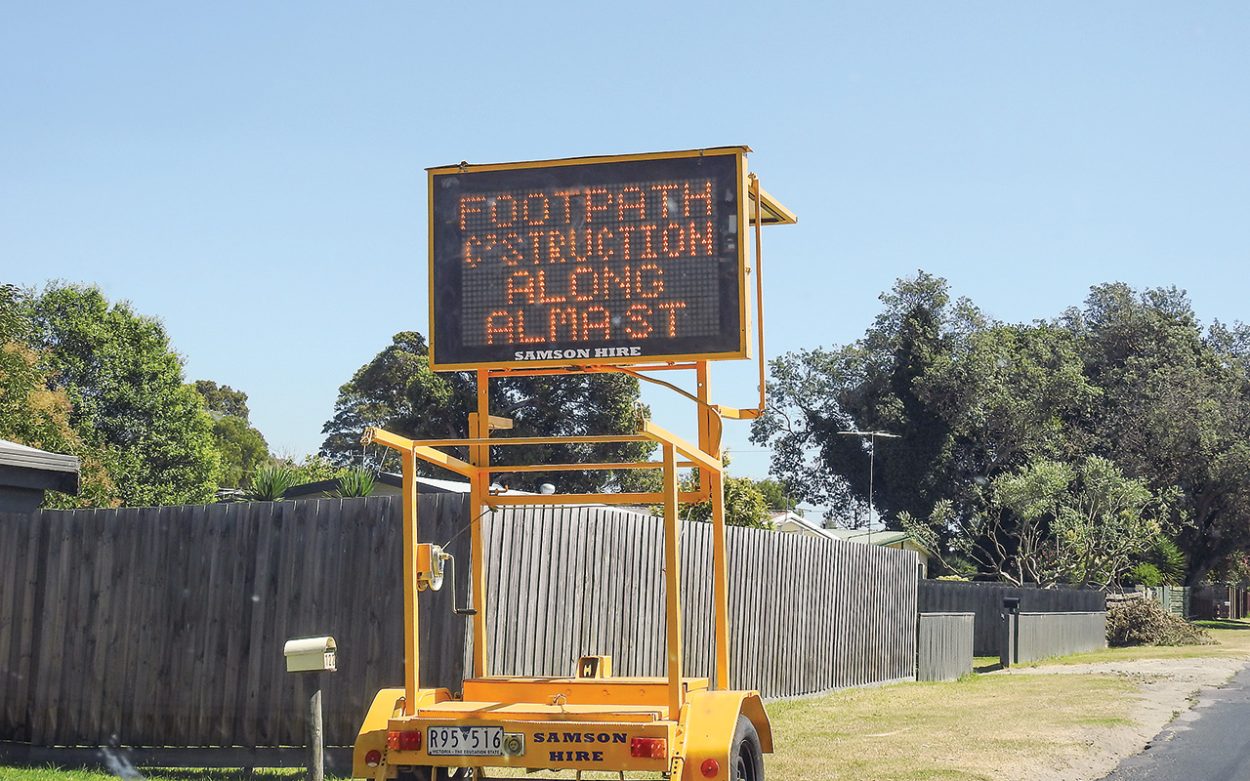A NEW method of assessing the need for making footpaths has seen a reshuffling of paths on Mornington Peninsula Shire’s priority list.
The list of 118 footpaths also includes problems that may be faced in constructing each path, such as “constructability implications” and “biodiversity and/or cultural heritage impact”. Footpaths seen as potentially having these problems will require “more detailed investigation” as their construction may be more complicated or costly.
Just three of the top 20 footpaths on the list are unaffected by these possible problems.
Footpaths at the top of list are Nepean Highway and Boundary Road, Dromana, with Nepean Highway being subject to “possible biodiversity and/or cultural heritage impact” and the Boundary Road path (previously 10th on the list) having “possible biodiversity and/or cultural heritage impact”. These two “initiated” projects are either being constructed or designed. The only three footpaths in the top 20 not facing potential problems are number four (previously 13th), Pickings Road, Safety Beach; 8 (previously 17th) Tallis Drive, Mornington; and 12 (previously 15th) Bungower Road, Somerville.
Sustainable transport planner Emily Clarke, in a report to council’s 5 March public meeting, said the updated shire’s Pedestrian Access Strategy “provides a new way to ensure footpaths can be prioritised where they are needed most”.
Demand for footpaths had grown while the council’s budget had “come under increasing pressures”.
The new construction priority list followed a review of planned and existing pathways and an updating of “evaluation methodology that prioritises construction … to reflect increased safety concerns, changing demographics and movement within the community”.
Clarke said the shire’s Principal Pedestrian Network encouraged pedestrians “whilst also supporting safe and accessible travel into and around key destinations”. “Improved connectivity and safety of the footpath network throughout the shire will not only increase accessibility for those with disabilities, but will also promote active transport including walking, cycling and other non-vehicular modes of movement,” her report stated.
The 2019 strategy’s fourth objective had been amended to “focus on active transport for key daily tasks rather than including recreational trails”.
Community input was invited into the footpath reassessment last September, through an interactive map on the shire’s website and a survey. The map received 300 responses and the survey 26. Residents from Shoreham, Flinders and Sorrento said they preferred gravel footpaths which were cheaper and suited the character of their areas.
The strategy has been amended to read “gravel pathways may be an acceptable alternative to formal pathways in less trafficked areas and where local character and environment are important to consider”. Other concerns raised included not enough priority given to “vulnerable residents” and school zones, and cycling and wider path networks were not been included.
Add A Comment




